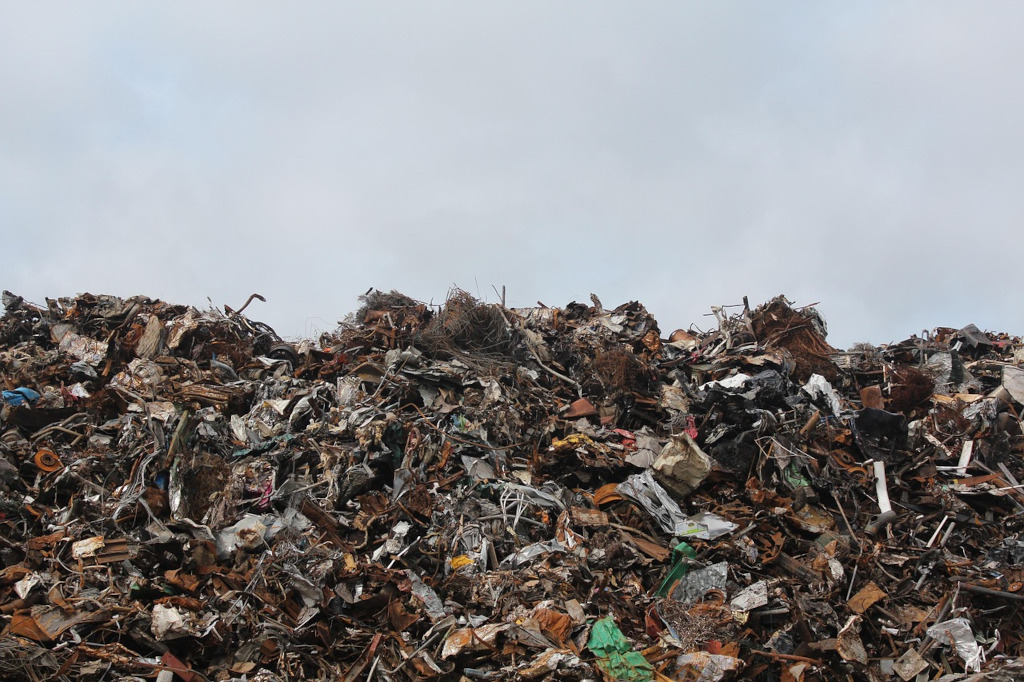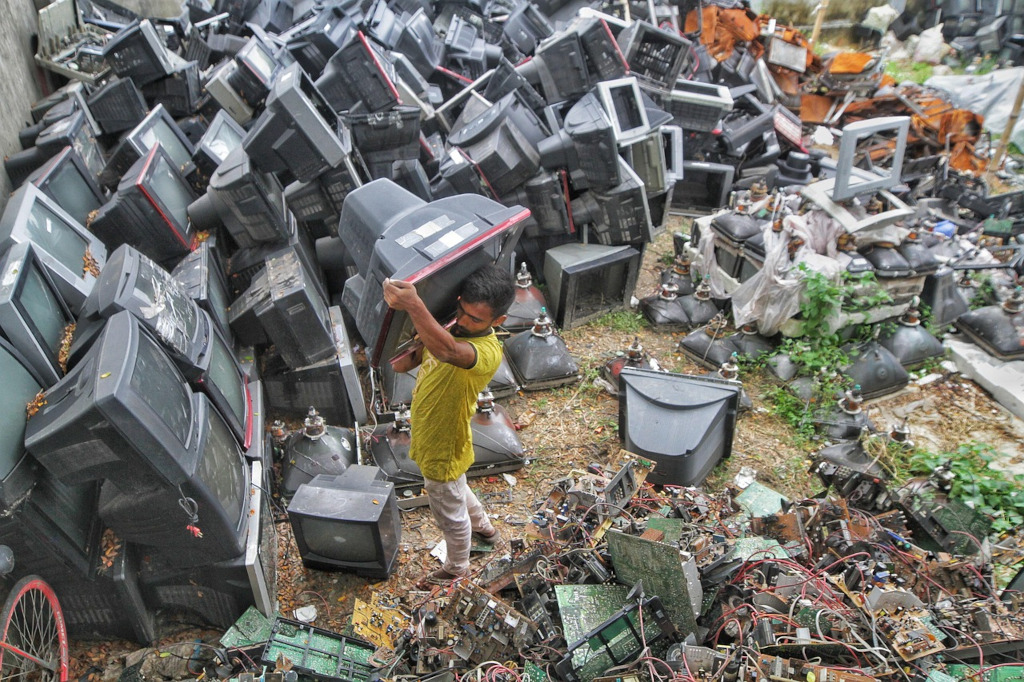Last Updated on May 19, 2025
Global production of electronic devices has skyrocketed, accompanied by an alarming surge in electronic waste (e-waste). As per the Global E-Waste Monitor, over 50 million metric tons of e-waste are generated annually, and this figure is projected to grow by 3 – 4% each year, surpassing 80 million metric tons in 2030!
Improper e-waste disposal poses severe environmental and financial risks, making it a critical issue demanding urgent attention. Today we examine the environmental and financial consequences of improper e-waste management and emphasize the need for responsible recycling practices.
The Growing E-Waste Problem

E-waste encompasses a wide range of discarded electronics, including smartphones, computers, household appliances, and batteries. Once considered cutting-edge, these gadgets are often rendered obsolete by rapid technology developments and shorter device lifespans.
For instance, the average lifespan of a smartphone is now only 2-3 years, contributing significantly to the e-waste crisis.
Statistics paint a grim picture: less than 20% of global e-waste is formally recycled, leaving the majority to end up in landfills or informal recycling centers. The uncontrolled disposal exacerbates the problem, as e-waste contains valuable and hazardous materials. The unchecked growth of e-waste has become a pressing issue for governments, businesses, and individuals.
Environmental Consequences of Improper Disposal
Electronics are composed of a mix of toxic and non-toxic materials. Improper disposal leads to harmful substances like lead, mercury, and cadmium leaching into soil and water, contaminating ecosystems and posing significant health risks to humans and wildlife.
According to the World Health Organization (WHO), exposure to these toxins can lead to neurological damage, respiratory issues, and developmental problems in children.
Greenhouse gas emissions are another consequence of improper e-waste management. When incinerated, electronics release harmful pollutants and greenhouse gases into the atmosphere, contributing to climate change. A notable example is the open burning of e-waste in countries lacking proper recycling infrastructure, which pollutes the air and endangers the health of local communities.
The Hidden Human Cost: Health Risks of Improper E-Waste Disposal
Case studies underscore the ecological and human harm caused by poor e-waste handling.
In Agbogbloshie, Ghana—one of the world’s largest e-waste dumps—informal recycling practices have severely contaminated the environment, earning it the nickname “the most toxic place on Earth.”
Toxic substances such as lead, mercury, cadmium, and arsenic are released during rudimentary processing methods, such as burning cables or acid baths to extract metals. These hazardous chemicals contaminate the air, soil, and water, exposing workers and surrounding communities to severe health issues.
Workers, often including children, suffer from respiratory problems, neurological damage, kidney failure, and cancer due to prolonged exposure to these toxins. Pregnant women in affected areas face higher risks of miscarriage, stillbirth, and congenital disabilities. Additionally, contaminated food and water supplies amplify the long-term impact, creating generational health crises.
Addressing these risks requires robust regulations, sustainable recycling practices, and corporate responsibility.
The Financial Costs of Ignoring Proper E-Waste Recycling
Improper e-waste disposal has significant economic repercussions. One of the most glaring losses is the failure to recover valuable materials.
Electronics contain precious metals like gold, silver, and rare earth elements, which can be reused in manufacturing. The United Nations University estimates that $57 billion worth of materials are discarded in e-waste annually, representing a massive missed economic opportunity.
Additionally, governments and communities bear substantial costs in managing e-waste dumped in landfills or left to pollute the environment. Cleanup efforts, healthcare costs related to toxin exposure, and the loss of arable land contribute to the financial burden.
Businesses face their own set of challenges.
Non-compliance with e-waste regulations, such as the European Union’s Waste Electrical and Electronic Equipment (WEEE) Directive or the Resource Conservation and Recovery Act (RCRA) in the U.S., can result in hefty fines and reputational damage. Several large corporations have been millions for improperly disposing of electronics, underscoring the financial risks of neglecting responsible recycling.
The Hidden Cost of Neglected Data Security in E-Waste
Improper disposal of electronic devices also poses a grave risk to data security. Many devices, such as smartphones, laptops, and hard drives, contain sensitive personal or corporate information, even after being discarded. Without proper data sanitization, these devices become prime targets for data breaches, identity theft, and corporate espionage.
Cybercriminals can exploit inadequately wiped devices to access confidential files, passwords, and financial data, leading to significant financial losses and reputational damage. For organizations, the consequences can include regulatory penalties, lawsuits, and the erosion of customer trust.
In 2024 alone, data breaches cost businesses an average of $4.88 million per incident, according to IBM. Many of these incidents stemmed from mishandled or improperly recycled electronics. Secure disposal methods, such as certified data sanitization and hard drive shredding, are essential to mitigating these risks and ensuring compliance with data protection regulations like GDPR and HIPAA.
The Solution: Embracing Responsible E-Waste Practices

Addressing the e-waste crisis requires collective action and a commitment to responsible practices. Organizations and individuals can take several steps to mitigate the problem:
- Partner with Certified Recycling Organizations Certified recyclers, such as those adhering to R2 (Responsible Recycling) or e-Stewards standards, ensure that e-waste is handled safely and sustainably. Partnering with such organizations guarantees compliance with environmental regulations and helps recover valuable materials.
- Promote Education and Awareness Educating employees and the public about the dangers of improper e-waste disposal and the benefits of recycling is crucial. Awareness campaigns can empower individuals to make informed decisions about discarding their electronics.
- Implement Internal E-Waste Policies Businesses should establish clear policies for managing electronics throughout their lifecycle. This includes secure data erasure, choosing certified recyclers, and tracking disposal processes.
- Support Global and Regional Initiatives Initiatives like the Basel Convention and the Sustainable Development Goals (SDGs) provide frameworks for addressing e-waste at a systemic level. Supporting such programs can amplify efforts to reduce e-waste’s environmental and financial toll.
- Adopt Circular Economy Principles By designing products with recyclability in mind and embracing practices like refurbishing and repurposing, companies can reduce the volume of e-waste generated while maximizing resource efficiency.
Conclusion
The environmental and financial consequences of improper electronics disposal are too significant to ignore. Toxic waste pollutes ecosystems, greenhouse gases accelerate climate change, and billions of dollars worth of recoverable materials are lost annually. As the world grapples with these challenges, the solutions lie in embracing sustainable and responsible e-waste practices.


